I originally planned to write about Clayton Kershaw, the modern Age of the Pitcher, and its inevitable downfall this week. I’ve been asked (several) questions about my thoughts on the Tommy John epidemic that seems to have overtaken baseball this year, and had a semi-coherent 1500-word column in mind.
That can wait a little bit.
Today, news broke that a Native American group was planning to file a federal lawsuit for $9 billion against the Cleveland Indians with regards to their name and their mascot, Chief Wahoo. The suit will be asking for the stated sum based upon “a hundred years of disparity, racism, exploitation and profiteering.” Robert Roche, a Chiricahua Apache and director of the American Indian Education Center, further stated that “it’s [the name/mascot] been offensive since day one. We are not mascots. My children are not mascots. We are people.”
Reactions on Facebook were swift. We’re in the midst of a continual public uproar over the name of the Washington football team, with millions of people (including half of the U.S. Senate) calling on the team to change its name. With the recent decision by the U.S. Patent Office that the logo of the Redskins is disparaging and racist, one might say that the long fight against racist stereotypes signifying sports teams was turning in the favor of, you know, those teams not being racist anymore.
At least, that’s what I thought until I clicked on the wonderful “Trending” button for this subject on Facebook.
The vitriol on display in some of the posts I saw still has my hackles raised ever since I read about it around noonish.
The common outcry is that people are just being “too PC,” that everyone fighting against the mascot has “too much time on their hands,” and in some cases, that the mascot isn’t racist. (Bob Rosen, president of the Cleveland based Wahoo Club, describes the mascot as “a loyal and friendly symbol.” You know, like Tonto.)
Let me begin by stating my position clearly: I am for the changing of the Indians mascot. The club has already started the long process of phasing out the Wahoo logo, replacing it with the block letter “C” more and more as the years go by. They’re not blind to the process. I firmly believe that in ten or so years, the mascot will be rendered an afterthought, a byproduct and reminder of baseball’s long and torturous racial history.
What angers me more than the mascot is the blind insensitivity to the subject at hand.
Let’s take a look at this mascot:
What we see here is a caricature of an “Indian”, not any specific tribe or nation of people, but of the common perception of Indians in American culture. This base format, revised and essentially upheld since 1951, echoes the standard perception of the time of its creation, as we see in another picture pulled from that time.
The above image comes from the Disney version of “Peter Pan.” Listen to the song that accompanies it and tell me that the lyrics and imagery are not offensive. Go ahead. I’ll wait.
The common theme amongst the posts I saw today is that “people weren’t complaing about this yesterday” and that it “must be time to jump on the bandwagon.” Also, that people need to stop being offended by every little thing.
The problem inherent there is that, because the above images were codified by popular culture, they became the accepted norm. Only now has it become apparent just how terrible they really are. In years past, native groups did not necessarily have the agency to stand up and say “Hey, you’re mocking us, belittling us, shaming our heritage. Please stop.”
One of Mr. Rosen’s statements really stands out to me: ““If just a small amount of people are against it, then I think you’re doing a disservice to people that like it.” What he’s saying can be interpreted as “We’ve been using this mascot for years. It symbolizes our beloved baseball team. Why should we have to change it?” On the other hand, it’s also saying “This may disparage a minority of people, but let’s face it: they’re a minority. The majority of (white) people have no problem with it, so suck it up, minorities, and just be glad that we’re not still clubbing you to death with rifles, raping and scalping your wives and daughters, or poisoning you with smallpox blankets as we steal your land right out from under you.”
I tend to think it expresses the latter viewpoint myself.
As far as the names not being intended to be disparaging, let’s remember that the use of Indians, accepted though it may be, is a misnomer in and of itself perpetuated through centuries of racism, open warfare, and persecution (much of it legally conducted by the government). The term “Redskin” is a disparaging term, referring to the flaying of native people as much as to the color of their skin. A relative comparison might be calling the team “the Washington Prairie Niggers,” as far as what the term meant for much of the 19th and 20th century (and still means to some people).
But Washington Prairie Niggers won’t sell T-shirts.
Some may yet cry that the term has lost its meaning, that it instead symbolizes the long, proud history of the respective franchises. Changing their names would be an outrage, and would devastate (white) fan bases everywhere.
Let’s flash back to the good ol’ 1930s and 1940s. The following video comes from the charming musical Babes in Arms, starring Mickey Rooney and Judy Garland.
https://www.youtube.com/watch?v=_SAGJWTIXiQ
If that number were featured in a movie today, perhaps featuring Jennifer Lawrence and Robert Pattinson, the producers would be burned in effigy. Yet, at the time the movie was produced, minstrel shows were an acceptable form of entertainment, yet another relic of our country’s terrible past.
You don’t see those around anymore.
Why not offensive mascots?
“But it’s too much trouble to change the mascot! You can’t just change the name of the team!”
Bullshit. I give you the Miami Redhawks of Southern Ohio, formerly the Redskins.
“People just need to accept history. It happened. No matter what, someone will be offended. There are more important things to worry about. Besides, it’s all in the past.”
Ask Sherman Alexie how much of our country’s disdainful treatment of Native Americans lies in the past. Ask him about how much improved rez life is from what it was when the main methods of transportation across the country were trains and horses. Ask him how easy Native Americans have it now.
Chief Wahoo isn’t a single relic of racism, either. It’s part of a long…
…systematic…
…dehumanizing…
…portrayal of an entire race of people, a race that has been battered, beaten, and robbed of pride and integrity by our country over the years.
I don’t think this lawsuit will go very far. I admire their purpose, and I respect their efforts to bring further national attention to the issue. I don’t think a team that is already trying to remove Chief Wahoo from any sort of official designation on its own will seriously fight this lawsuit (MLB is lawyered up enough to have this suit thrown out in court), but I think the team should remove the mascot sooner, rather than later. I think it would certainly behoove the team to make annual contributions towards efforts at providing reservation youths better educations, educations that might lead them towards empowering themselves.
However, a certain majority of people would rather not. Because it’s easy to instead say “they’re just looking for something to complain about.” Or “there are more important things to do”. Celebrating Chief Wahoo as a mascot for a sports team is just part of a stolid white majority trying to maintain a sense of cultural propriety over a persecuted minority, not with guns and bullets, but with wooden bats, leather gloves, and tomahawk chops.

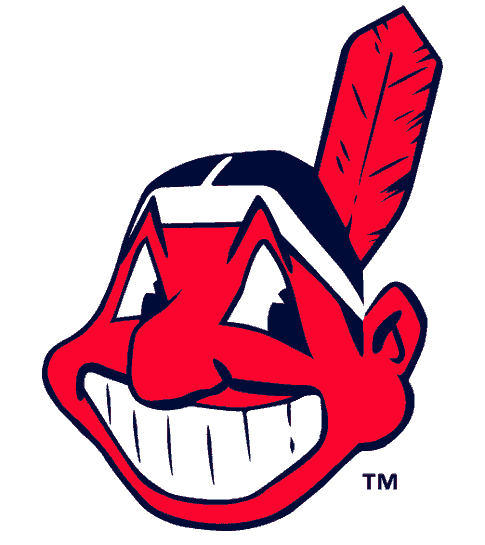
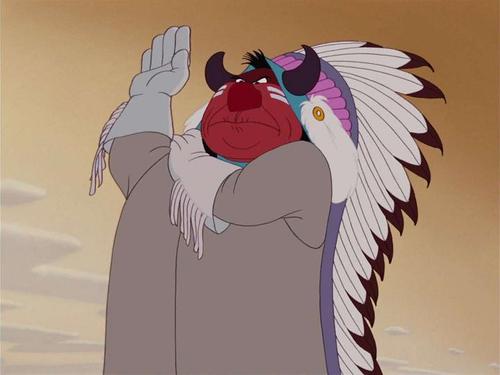
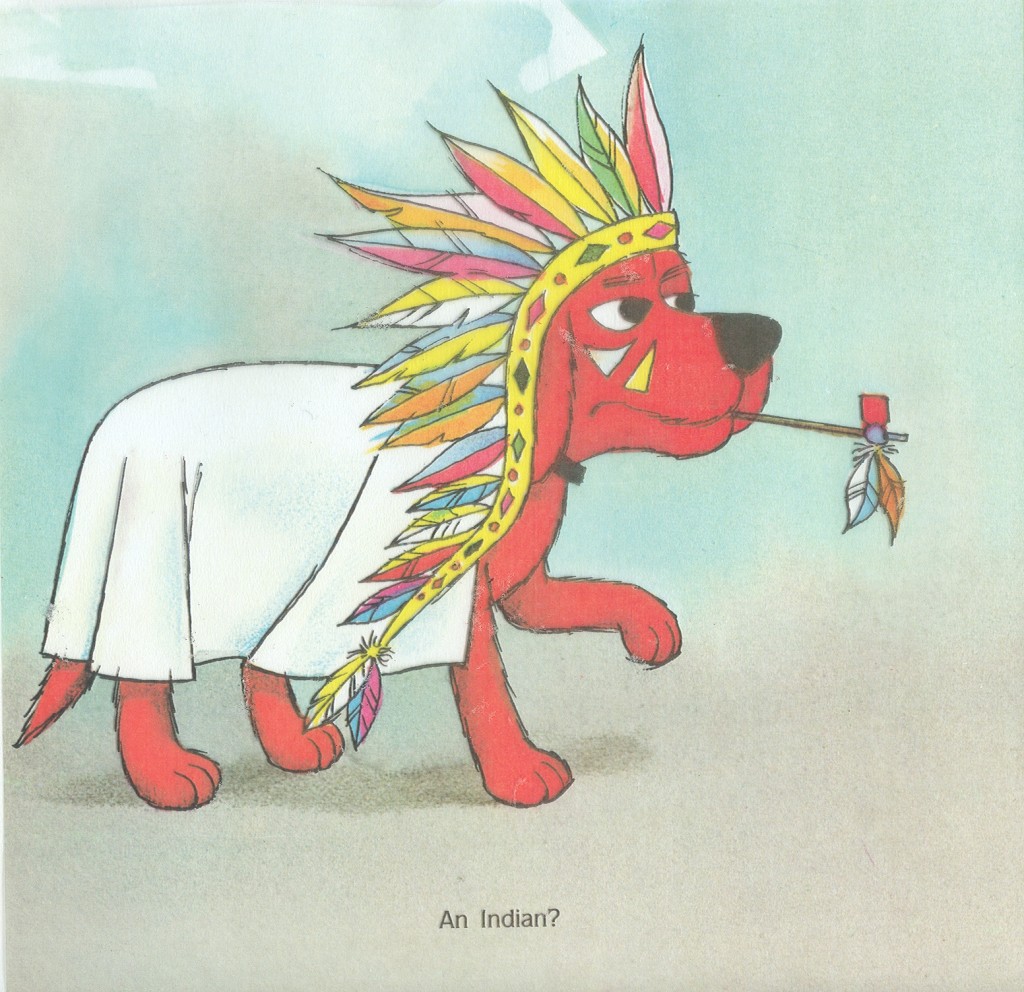
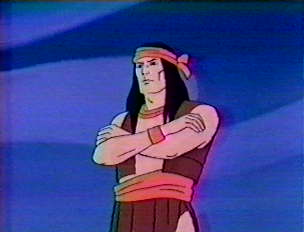
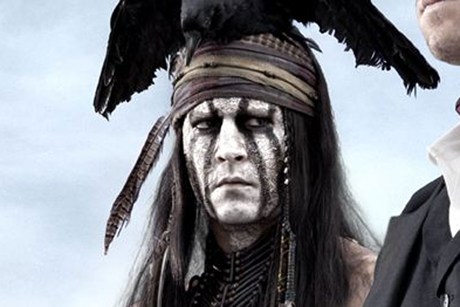
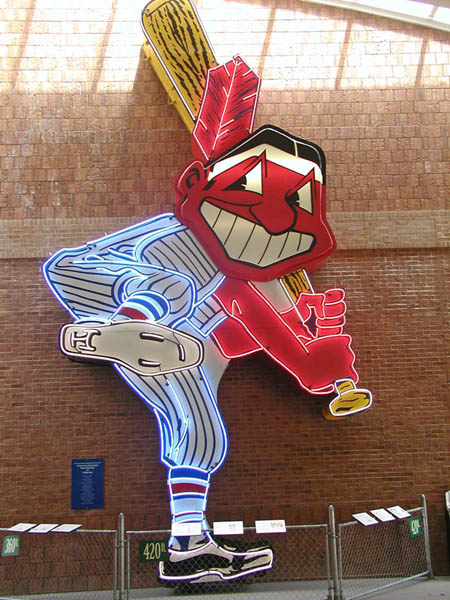





You mention the “tomahawk chop” of Atlanta Braves infamy, and I find that a good example of how team loyalty can rob fans of awareness to what they’re doing.
I remember watching “Robin Hood: Men in Tights” so many years ago, where they make fun of this idiotic crowd chant. Watching feudal English peasants do the “chop” exposed it for just how fucking stupid and out-of-place it looks. In the back of my mind, I think I convinced myself that nobody would actually continue to do this in real life.
I randomly caught a Braves home game on TV a couple weeks ago, against the Angels. The Braves were down, but looking to rally in the middle innings, and it started: the “chop.” I stood dumbfounded as I watched the camera pan across the overly white crowd in attendance. It was one of the most embarrassing things I’ve ever witnessed, and reinforces a lot of what you wrote above.
This is a strange thing to process as a Northeast Ohioan who has loved the Indians since age 5. The amount of clothing and memorabilia I’ve owned and still own emblazoned with the image of Chief Wahoo could burst a closet. Nickname and mascot alike are things that link all of us to the team’s history (Chief Wahoo, looking worse than he does now, was on the caps of the last squad to win the World Series). BUT sentiment over something that is definitely racist, no matter the intention or argument, cannot trump the fact of racism and can never trump it. I love the big C and how it calls back to the dawn of the sport and the simple uniforms, and I love that people are aware why this change is necessary. I’ll be honest that the inner child, the memory of the boy who read every book on the team that he could and snatched up every Indians baseball card there was, will feel a little sad on the day Chief Wahoo inevitably goes, because it is inevitable, but the adult me who wants to live a life that respects the dignity of every human being applauds this wholeheartedly. As the Chief himself said once, “Players and mascots come and go, but baseball is forever.” A change like this cannot effect the joy of being there, of rooting on your favorite nine, and the final result will be a situation that does NOT disrespect or demean anyone, so we should hasten it along. And then dump Slider as well.
(Above quote: he once told his side of the story: http://www.esquire.com/features/chief-wahoo-cleveland-indians-0113)